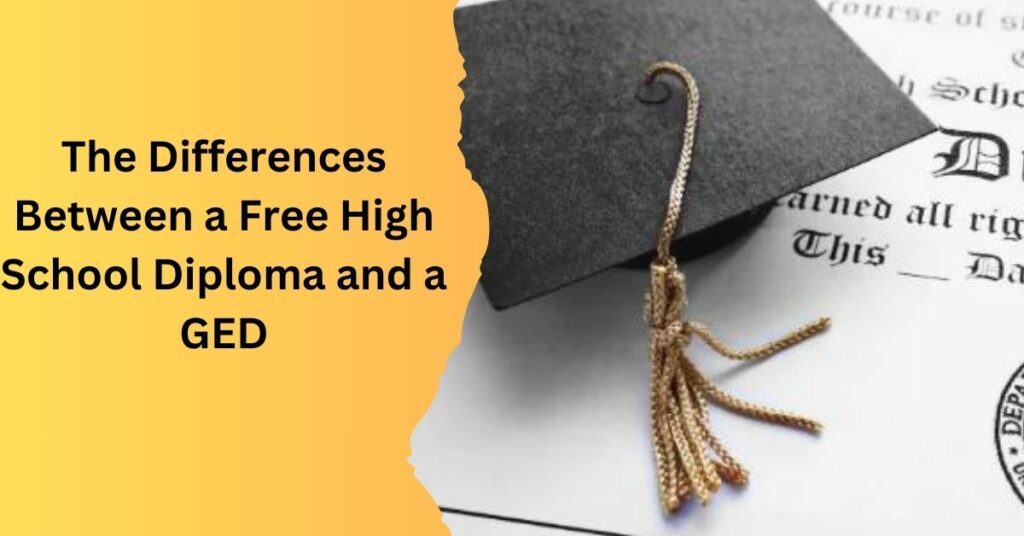The Differences Between a Free High School Diploma and a GED

A General Educational Development (GED) program certificate is an alternative to a high school diploma. GED programs help teens and adults who were unable to finish high school complete their secondary education.
A GED differs from a high school diploma in aspects such as maximum and minimum age requirements and the time one commits to the program. Here are more of the differences between a free high school diploma and a GED:
Age Requirements
Most states allow learners above the age of 16 to pursue a GED with an infinite upper age limit. There is no minimum age requirement to be eligible for a high school diploma program.
Most states set a maximum age for obtaining a traditional high school diploma between one and three years after an individual’s 18th birthday.
Local government and learning institutions offer free high school diploma programs funded by taxpayer money and donations to students over 18.
Time Requirements
A traditional high school diploma takes up to four years to complete. Some adult students can apply their previously completed high school credits to lessen their program length. A GED program requires students to complete a 7-hour test covering five subject areas.
GED candidates may need to register for a short preparation course or spend time preparing for the test to refresh their knowledge.
Educational Requirements
Traditional high schools require learners to complete science, mathematics, history, and language arts courses before receiving their diplomas.
Students in free diploma programs can complete some elective, work-related courses to meet their credit requirements.
GED high school programs have more formal course and content requirements. The GED test covers subjects like math, writing, science, and social studies.
Testing Requirements
The GED test and high school diploma final examinations have similar difficulty levels. States require high school learners to pass all their courses with a C grade or above to earn a diploma.
Adult learners can rely on free tutoring sessions to deepen their understanding of more complex concepts. GED applicants are expected to pass four examinations.
The examinations cover mathematics, language arts, social studies, and science. These examinations assess the skills gained by students completing the high school program.
The GED exam has multiple-choice, long-form, and extended essay questions. A learner passes when they score 60% or higher on the exams. The GED exam can be retaken up to three times every year.
Post-Secondary Plans
Most four-year universities and higher education programs require applicants to have a high school diploma. If you aren’t interested in higher education, a GED is helpful for finding higher-paying work opportunities.
You can add the skills and references you gained through a recognized high school program to your resume to help you get a job. Some free high school programs have partnerships with local businesses to increase your chances of finding employment after graduation.
Some diploma programs connect learners to career counselors to help them set goals and plan for a career after completing the program.
Start a Free High School Diploma Program
GEDs and high school diplomas show that individuals possess the basic knowledge and learning skills needed to succeed.
If you did not complete high school and want to receive proof of your education as quickly as possible, a GED program may be right for you.
You only need to prepare for and complete the GED exam. Adult students pursuing a high school diploma complete the minimum credit hours with the support of teachers and mentors.
Look for a free diploma program that offers career training and job placement opportunities to enhance your potential for success. Enroll in a community high school diploma program today to start planning your future.








